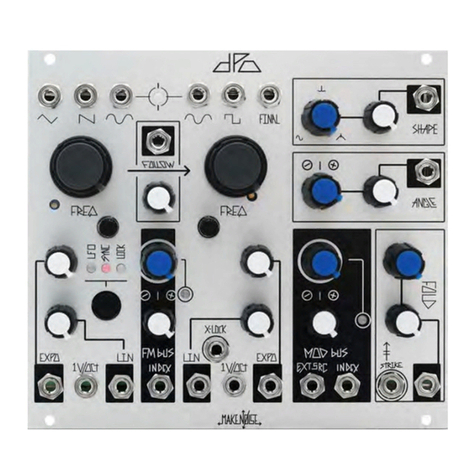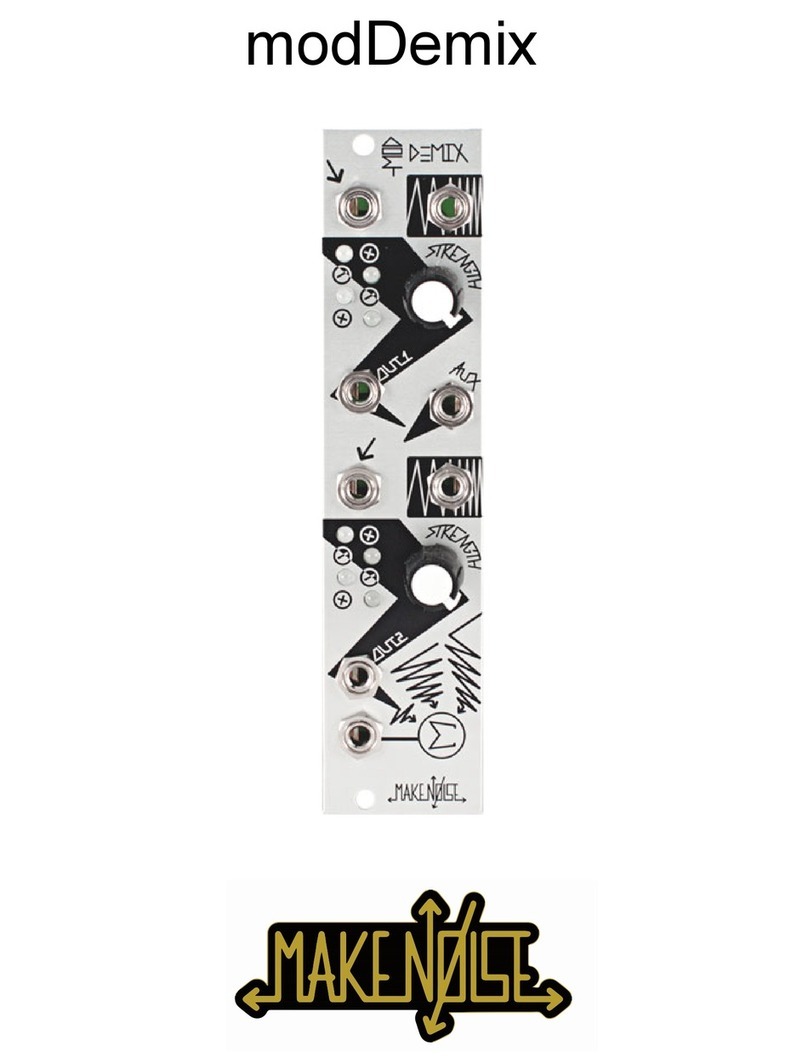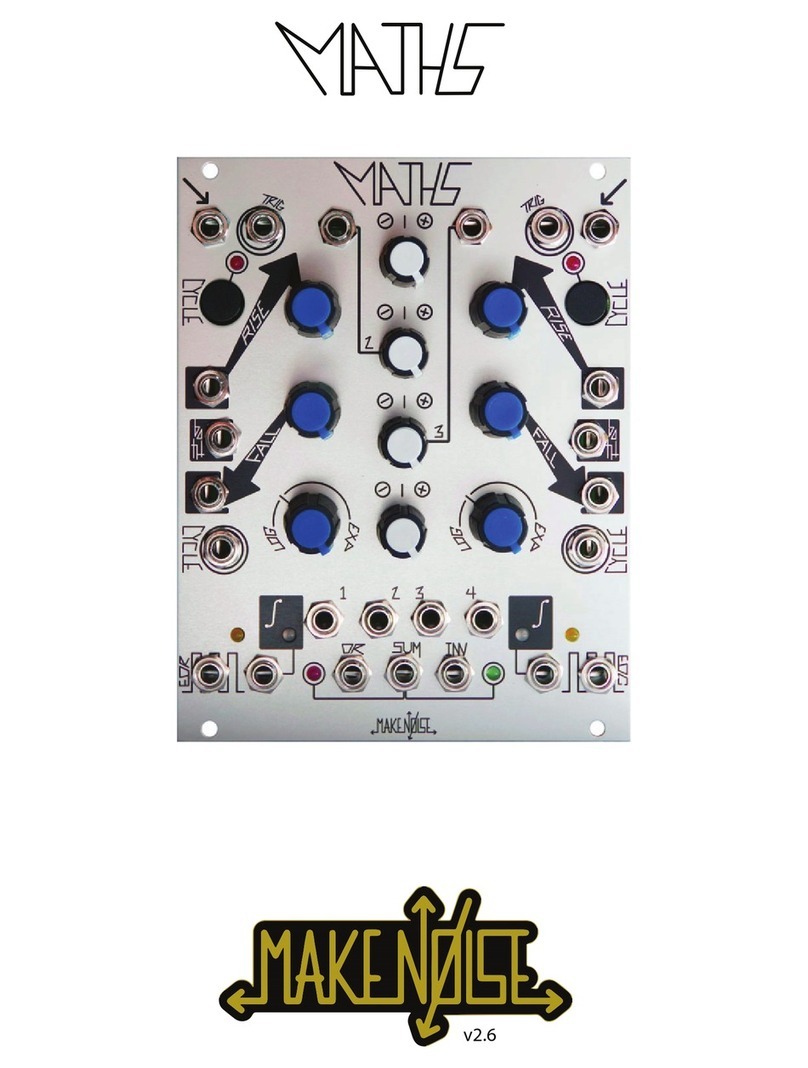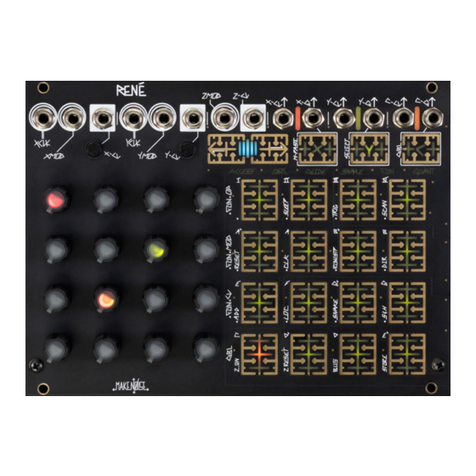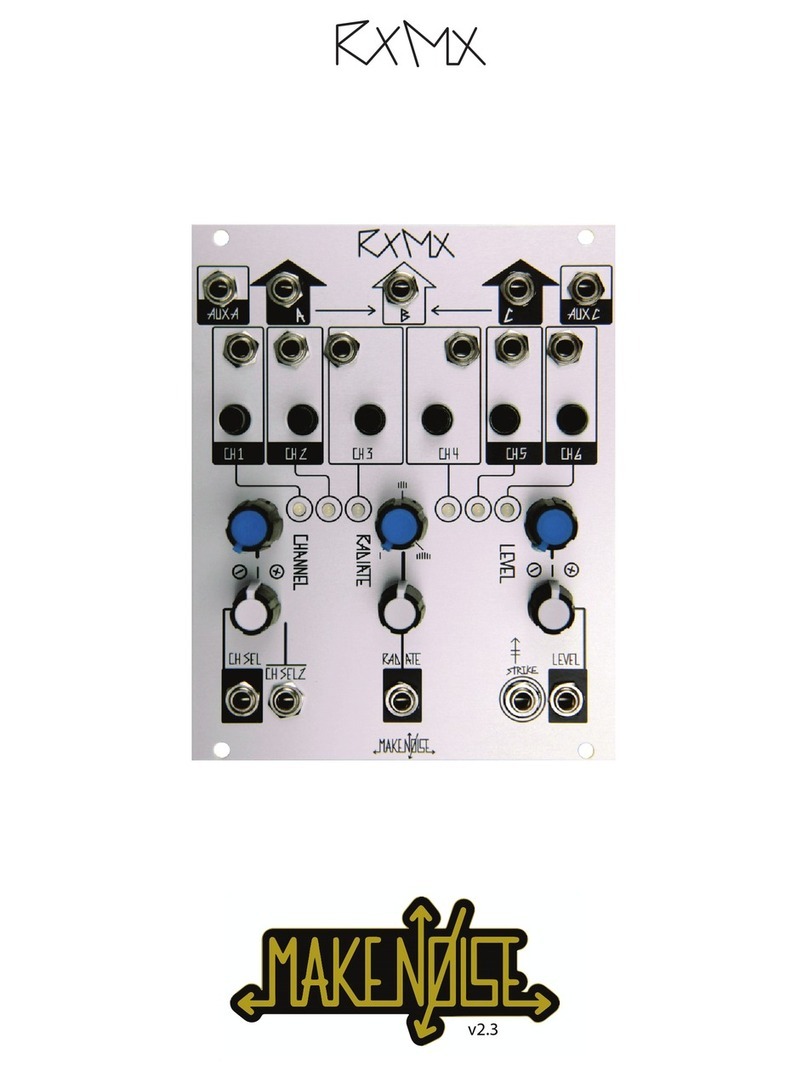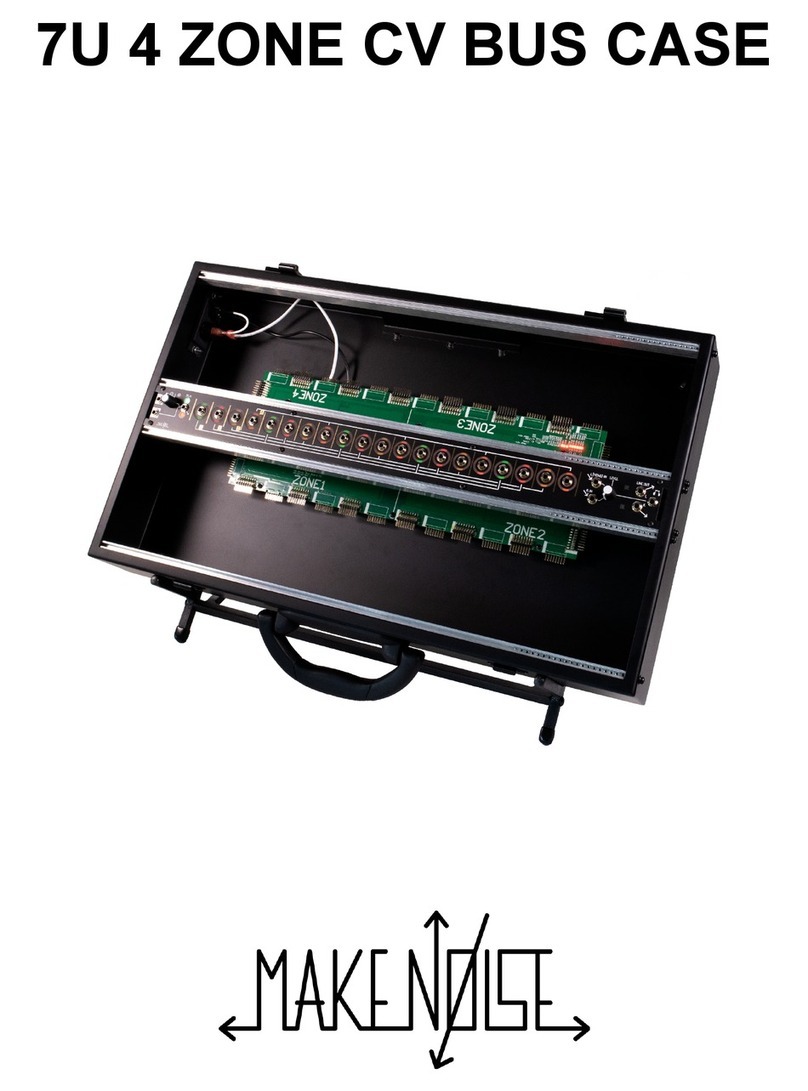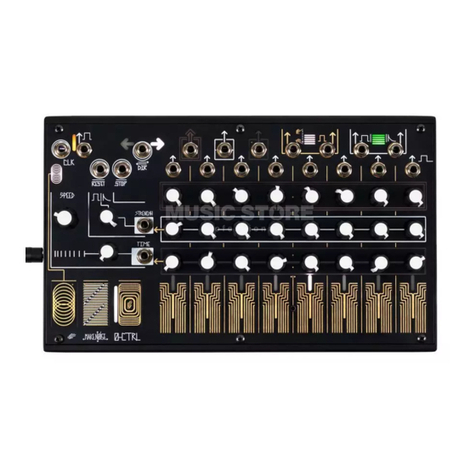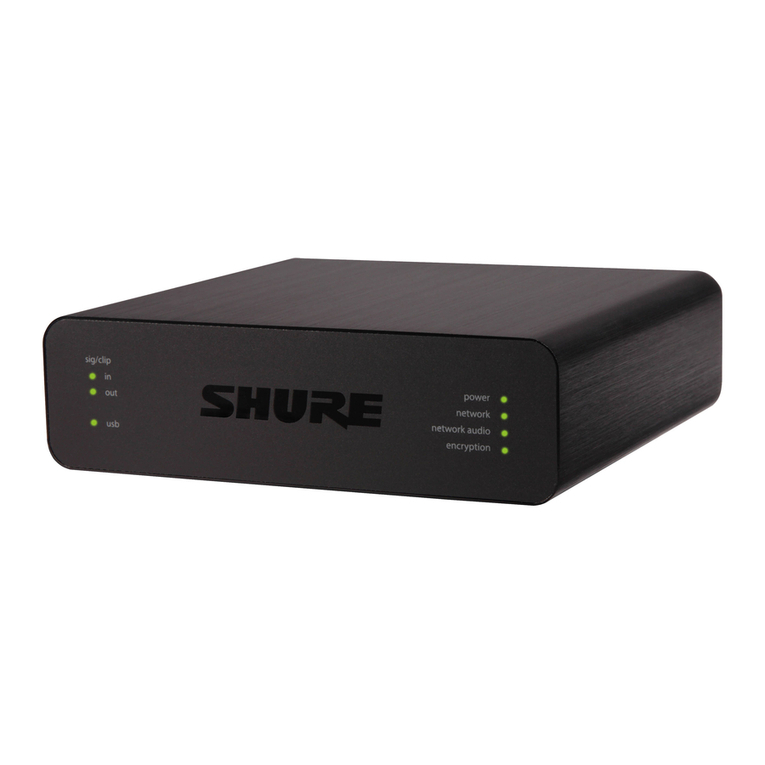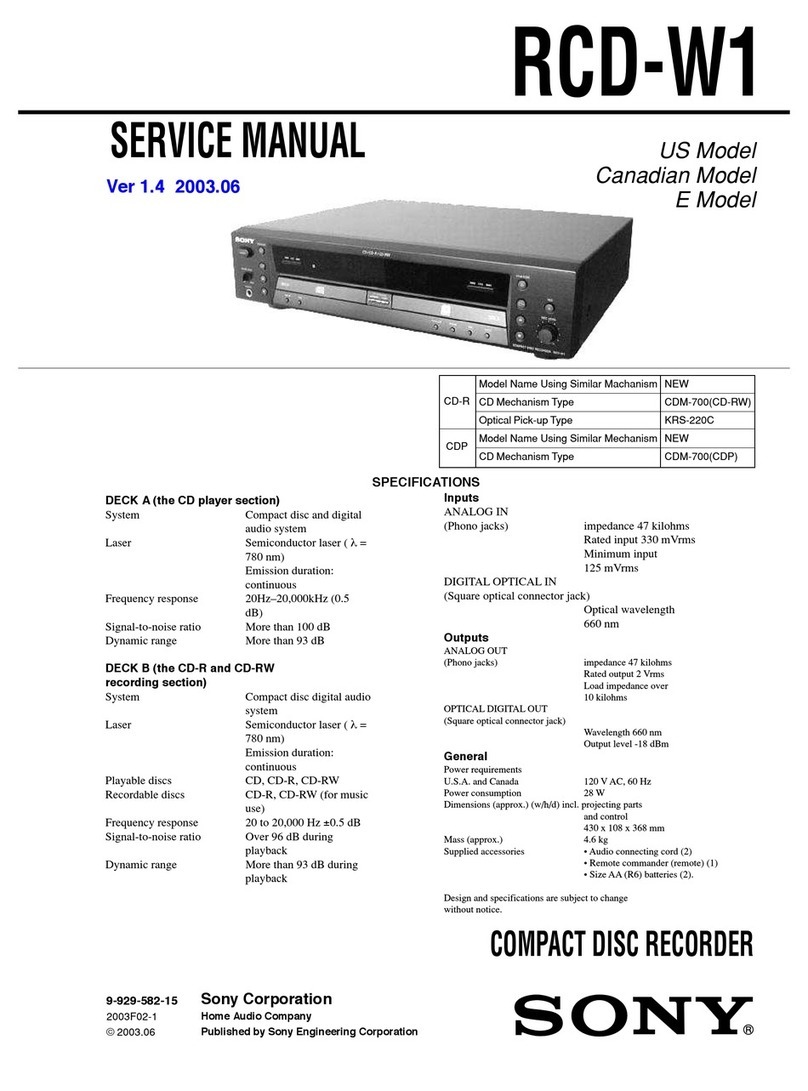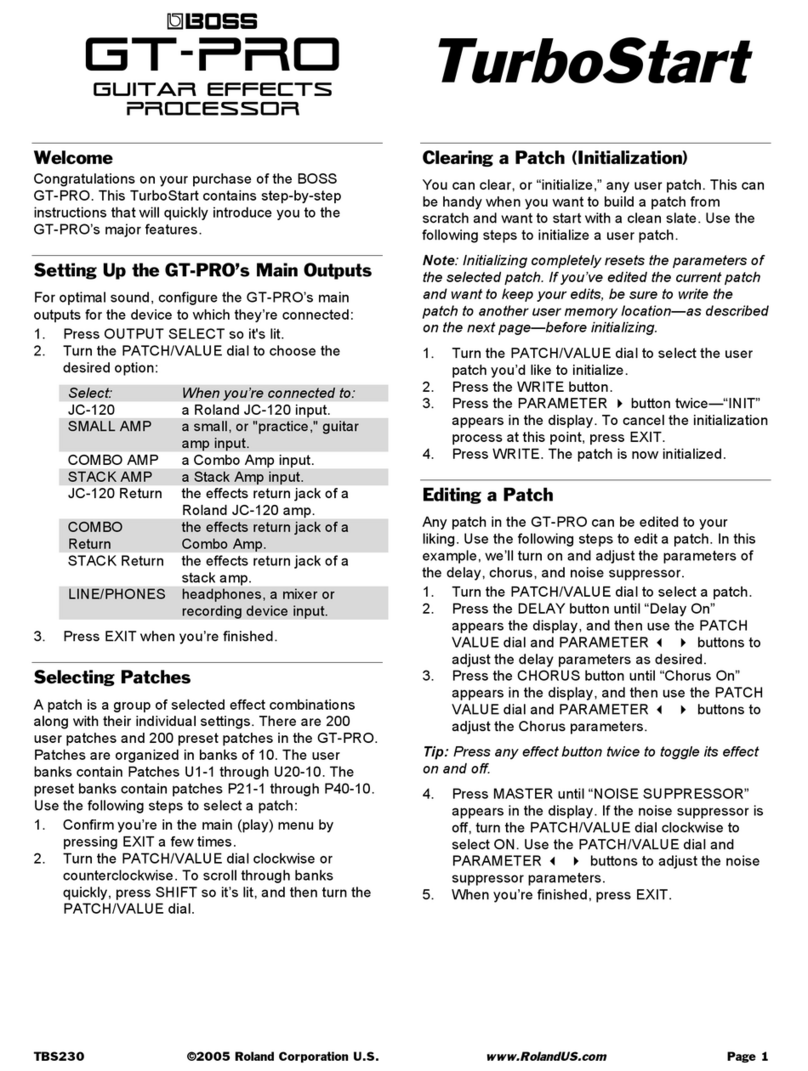
9
The Waveform Outputs
Mono Outputs
Along the top of the XPO are five Mono wave shape outputs that are derived from the oscillator core.
The Sine wave is shaped from the Triangle using the same circuit used on the DPO and STO. The Sawtooth, Spike, and Sub
outputs are new for XPO. These outputs are useful on their own as traditional VCO outputs to be processed via VCAs, filters etc.
Using mixers such as Optomix or X-PAN they could be mixed together and/or panned alongside your choice of stereo outputs,
and they can also be very useful as modulation sources for timbral controls on the XPO itself (Center, Modulate, etc.) or for
audio rate modulation on processors such as QPAS, especially when said processors are also operating on outputs from the
XPO itself, which will always represent at the same frequency at every output.
The Sine Wave is derived from the Triangle core of the oscillator and is provided as an output because it is great for
blending with signals of greater harmonic content in order to strengthen the fundamental. The Sine shape has
almost no harmonics, so it is also a good starting point for creating complex FM sounds because the sidebands
introduced through FM are not obscured by harmonics present in the signals utilized.
The Triangle Wave is the core shape of the oscillator. It contains slightly more harmonic content than the sine wave
and also a strong fundamental, and will cut through a mix slightly more than a sine wave. It can be a useful
modulation source where you want more harmonics created, for example audio rate modulation of Filter Cutoff.
The Sawtooth Wave is a classic bold East Coast synthesis waveform that is frequently utilized in subtractive synthesis,
as it contains all harmonics and provides a rich source for being shaped with filters.
The Spike Wave is a thin, tall spike shape with low fundamental presence resulting in a thin, “buzzy” sound. This less
common waveform can be found in the seminal West Coast “Music Easel” synthesizer. It is useful for adding or
subtracting a strong harmonic from a less harmonic waveform such as triangle. It is also a useful shape for
modulation especially destinations that have the potential for "ringing" such as resonant Filters.
Sub Oscillators are a classic Far East Coast waveform that have been used to thicken up the sound when mixed with
other waves from the same VCO. The Sub Waveform output on the XPO contains a mix of multiple Square waves
derived from the oscillator core at lower octaves (sub-harmonics). , This output is a good candidate for subtractive
synthesis with filters. It is great for basslines and other “fat” sounds, but it is also an excellent Modulation source.
Patched to the Filter Cutoff of QPAS it will super-impose sub-harmonics that make the filter growl.
Another version of the Sub Wave is also normalized to the XPO’s Linear FM input. With nothing patched to this input,
FM Depth can be used as an additional voltage controlled timbre parameter with the result being sub harmonic FM.

